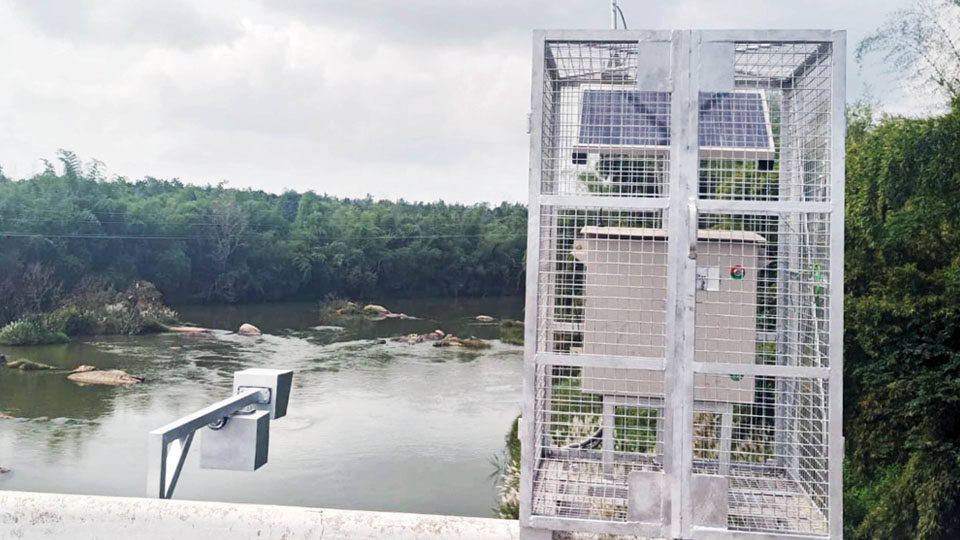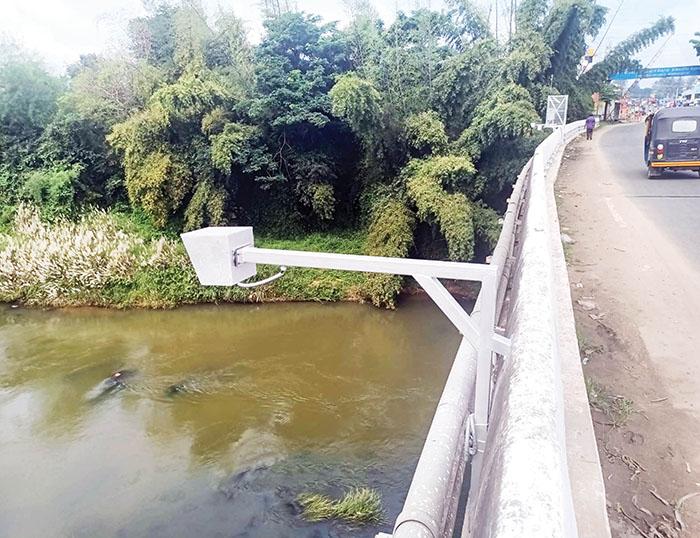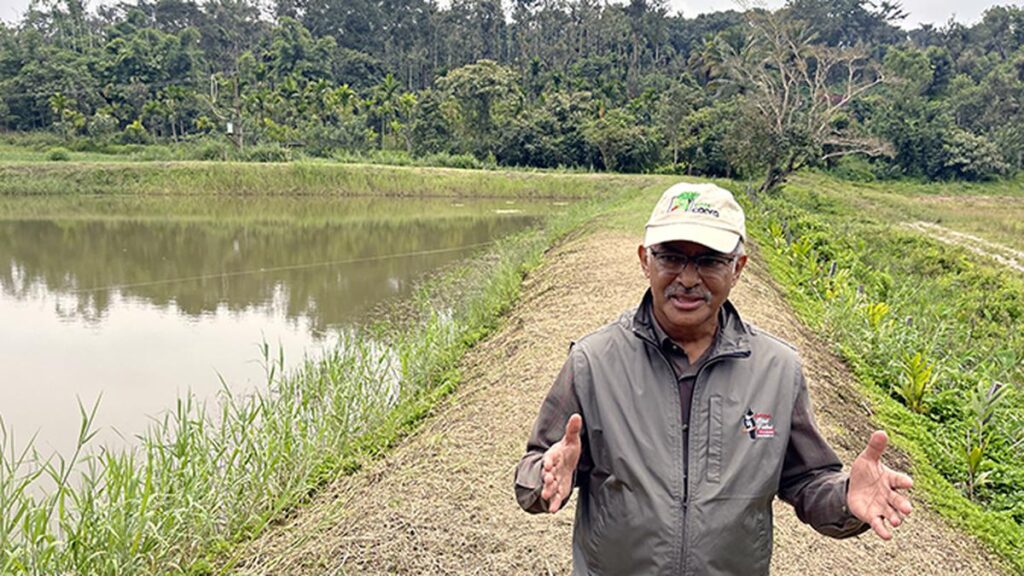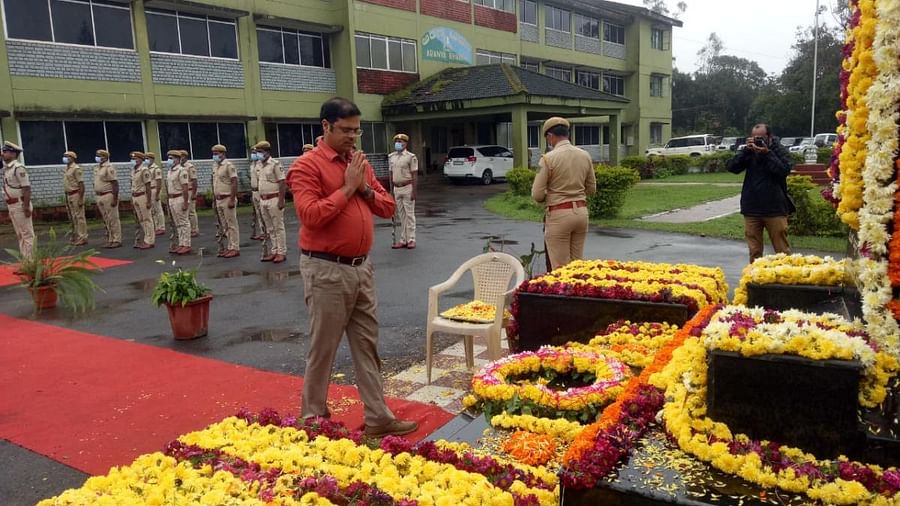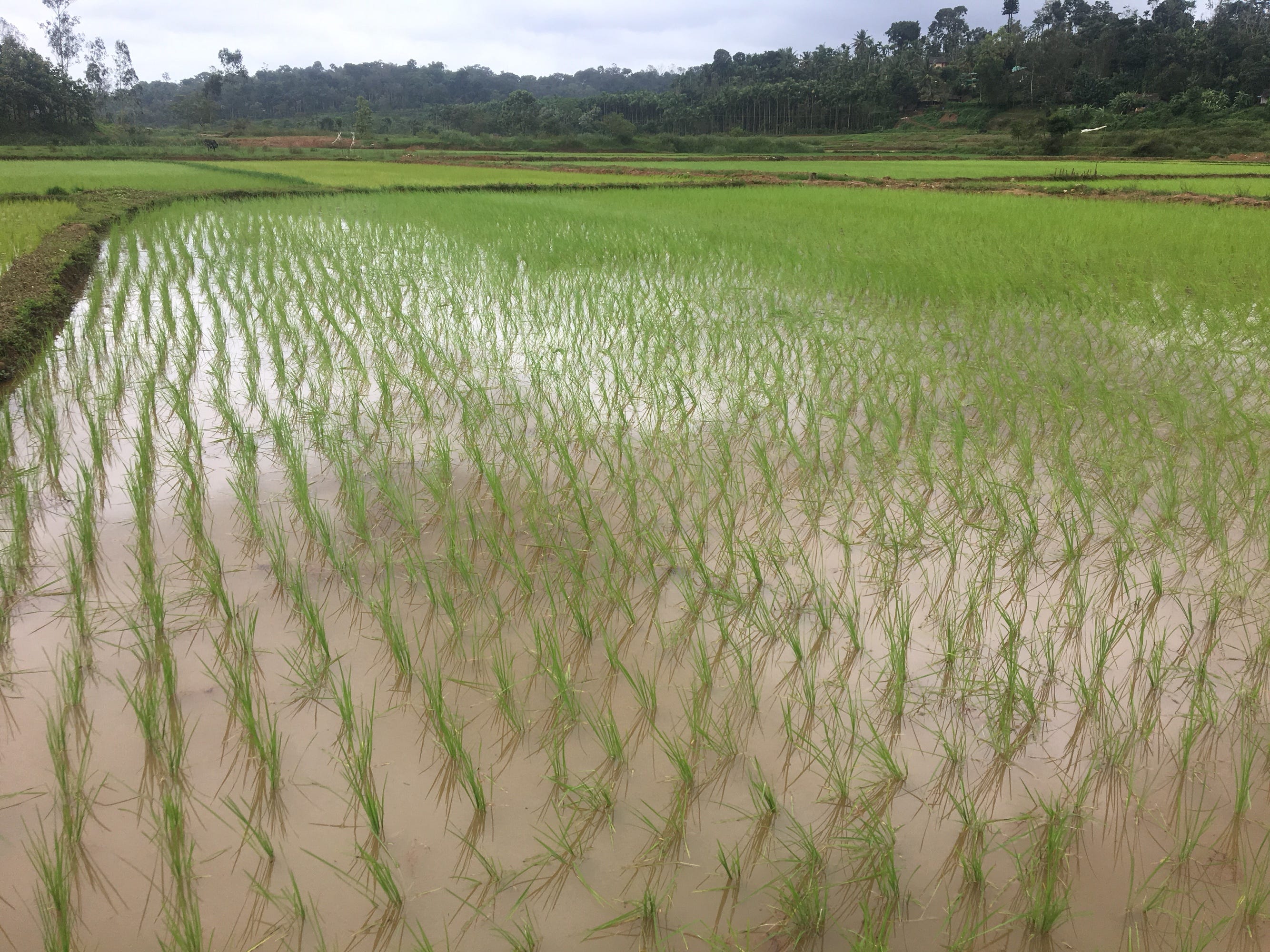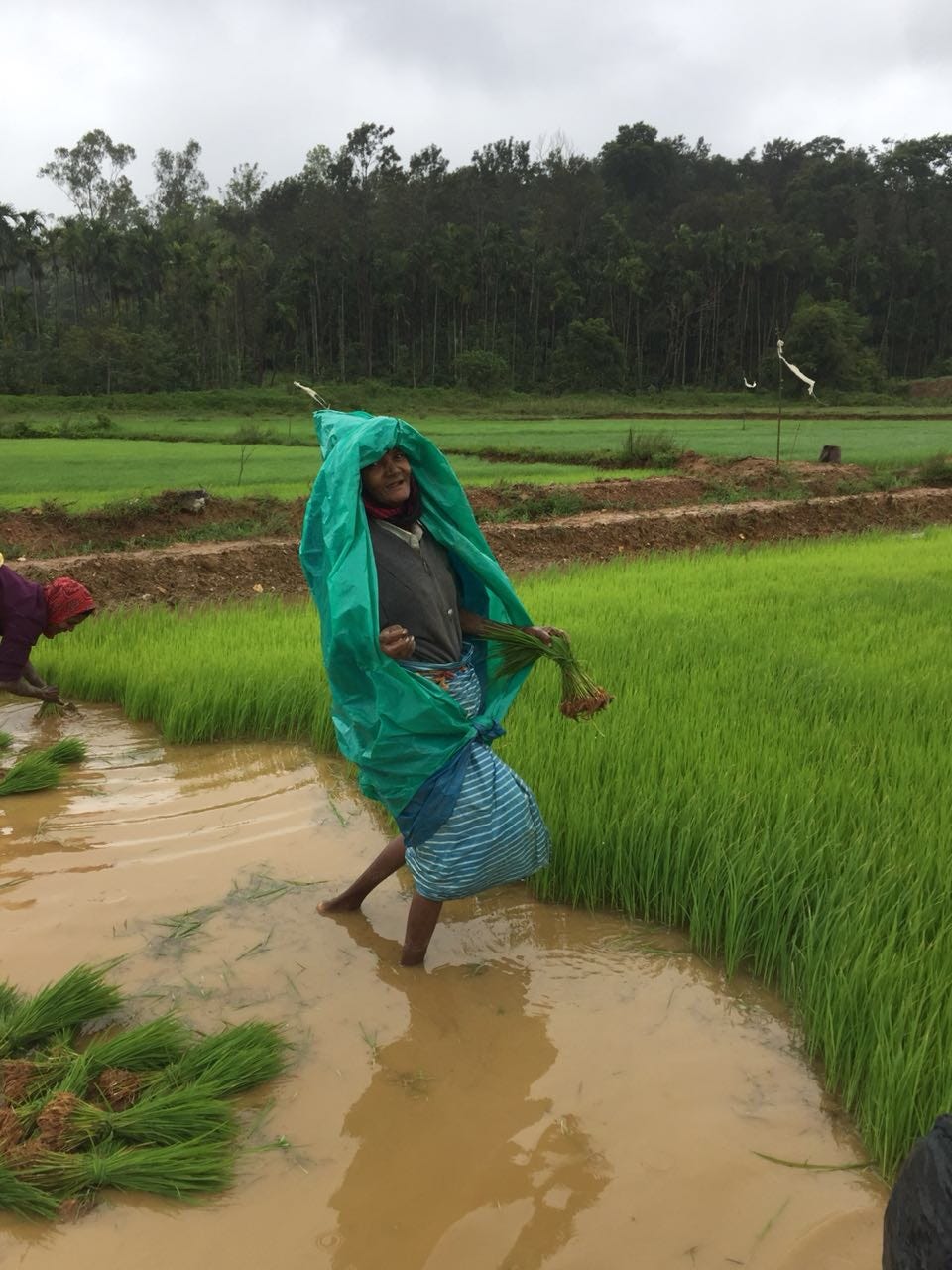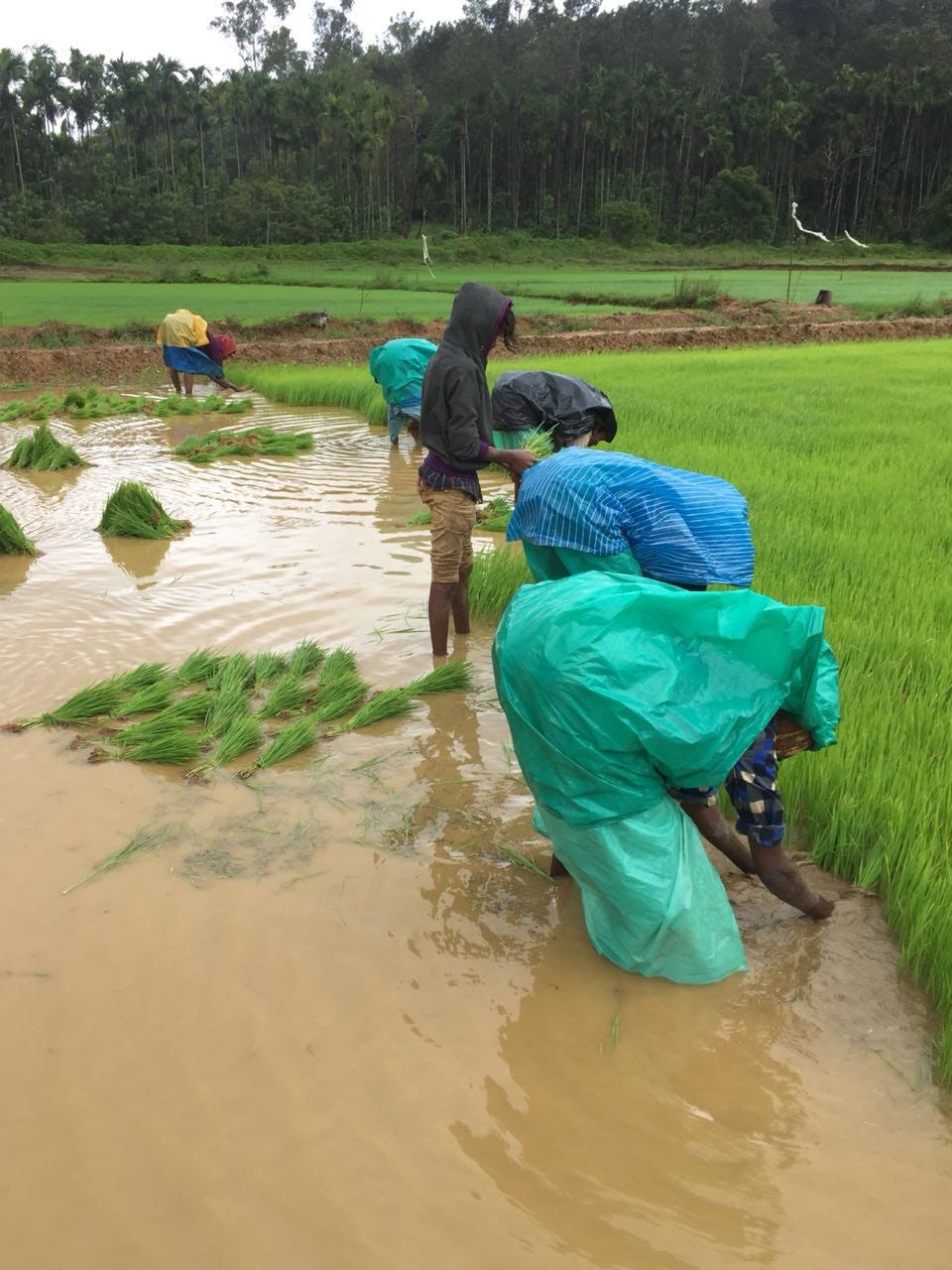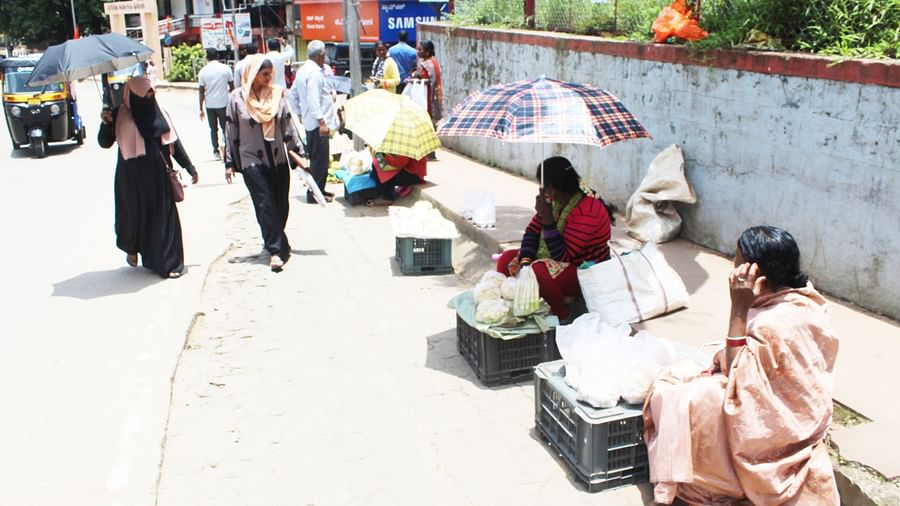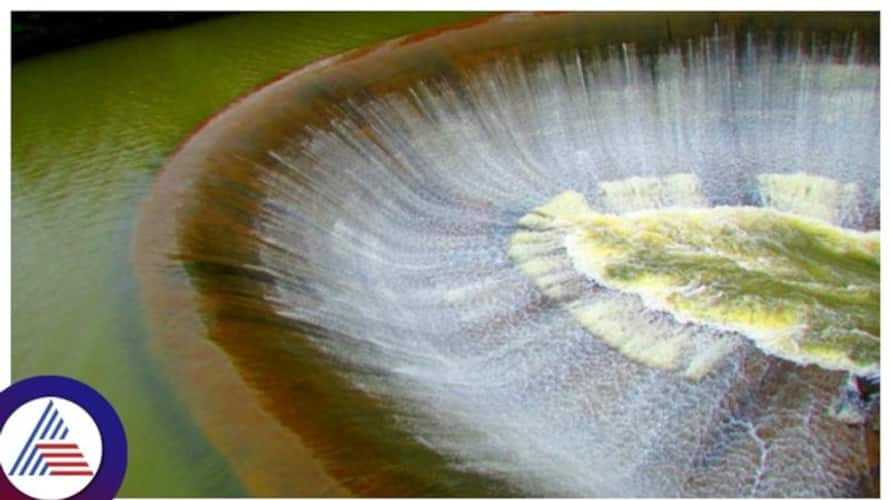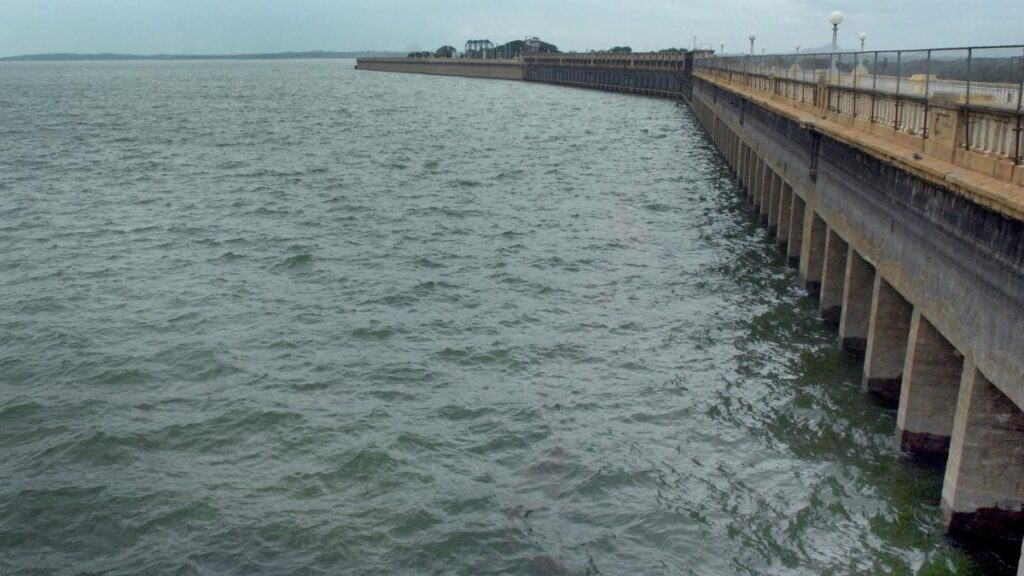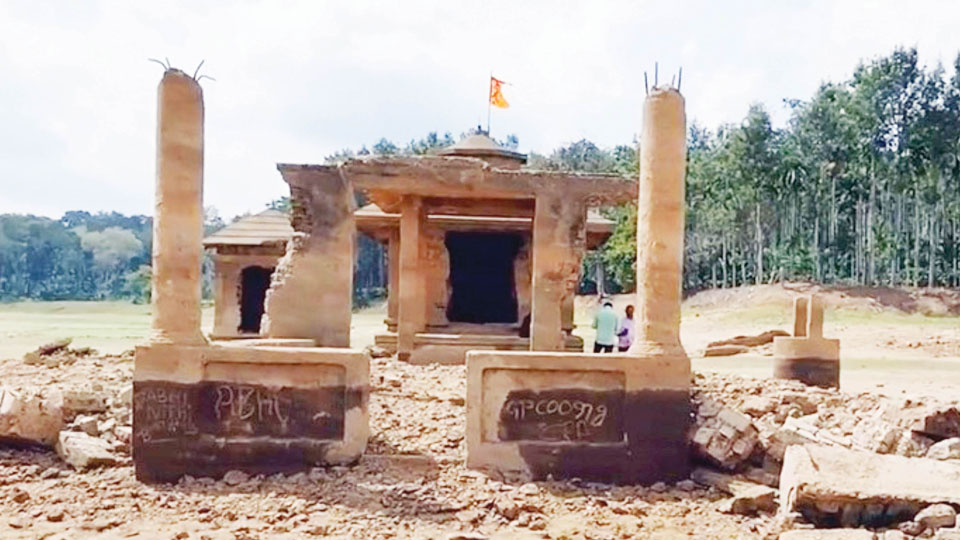
Kushalnagar:
A Temple that was submerged after the construction of the picturesque Chikklihole Reservoir in Kushalnagar Taluk of Kodagu district has emerged from the waters, thanks to the dry spell and the failure of monsoon. People are coming to see the Temple in hordes and the place has become a picnic spot and a weekend getaway.
The Shiva Temple, constructed in 1983, has become accessible to people after 40 years. In April 2017 too, the Temple was visible for a brief period but was soon covered in water as it rained in June that year. This time, however, people have a chance to see the Temple till the next normal monsoon which is scheduled to start in June 2024
The Temple, located right in the middle of the Chikklihole Reservoir is visible along with the sanctum sanctorum and the pillars on the sides. There is a small well that was used as a source of water for the Temple before the Reservoir was constructed. Apart from the Shiva Temple, there are structures dedicated to Lord Ganesha and Nandi.
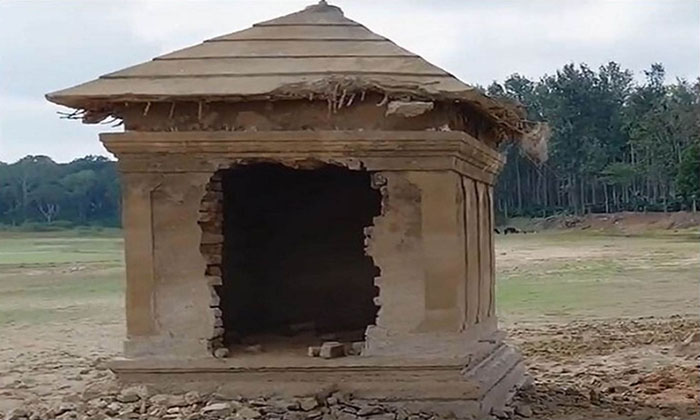
Clear warning, say residents
The re-emergence of the Temple six months before the onset of monsoon season is causing concern among locals about the potential implications and raising anticipation of a looming water crisis. This situation suggests a possible worsening of the water scarcity issue within the Cauvery basin. Usually, in December, the water inside the Chikklihole Reservoir does not dry up like it has happened this year. The current circumstances serve as a clear warning, say the residents.
Unfortunately, this year, due to inadequate rainfall in Kodagu, the Cauvery River did not flow vigorously, resulting in a water shortage in the Reservoir. The Chiklihole Reservoir, constructed for irrigation and agricultural purposes, saw water flowing into it in the initial months and excess water was discharged. As a result, the Reservoir lost its storage capacity as it did not rain beyond the initial months.
Thousands of farmers depend on the Chikklihole Dam for irrigation in the villages of Kushalanagar, Rangasamudra, Chikka Bettageri and Dodda Bettageri, Nanjarayapatana, Virupakshapura, Rasoolpura, Bollur, Basavanahalli and Guddehosur.
Even in hot summers these years, there was rarely a situation like the submerged Shiva Temple emerging from the waters. This year, however, the dam has become dry, exposing the structures beneath it.
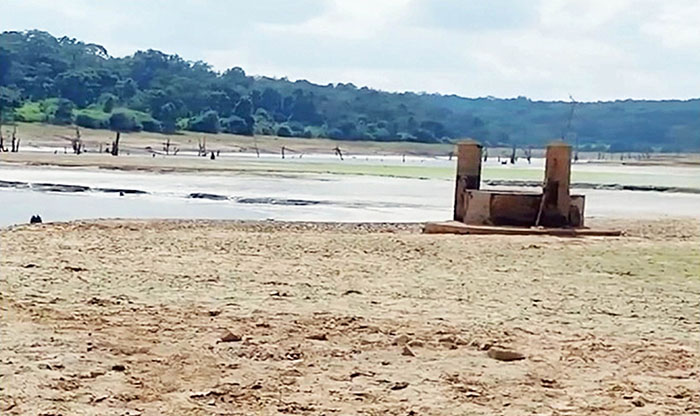
150-year-old Temple
The Shiva Temple was built 150 years ago by the Magdoor family, hailing from Kerala. The family migrated from the neighbouring region and were indulging in agriculture for a living. As the place had a special significance due to its spiritual nature, astrologers from Kerala were invited there. On the advice of the ‘thanthri’, the Temple was constructed with regular pujas and a grand Mahashivarathri and temple fair that used to be attended by thousands of people.
The Chikklihole Dam was built in 1983 when R. Gundu Rao was the CM to store and supply 0.18 tmcft (thousand million cubic feet) of water. When the Temple was submerged, the Government, honouring religious sentiments, ordered an alternative Temple to be built nearby. Many channels were constructed to take the water to the fields of tail-end farmers.
In 1993, the descendants of the Magdoor family constructed another Temple of Lord Vishwanatha nearby and consecrated the main idol of Lord Shiva from the old submerged Temple in it. The Vishwanatha Temple of Magdoor went on to become famous.
source: http://www.starofmysore.com / Star of Mysore / Home> News> Top Stories / December 10th, 2023
